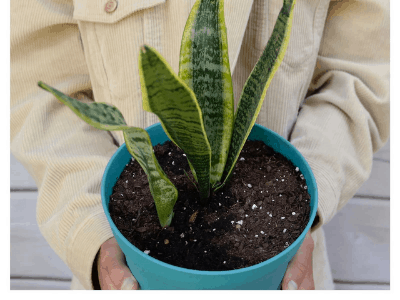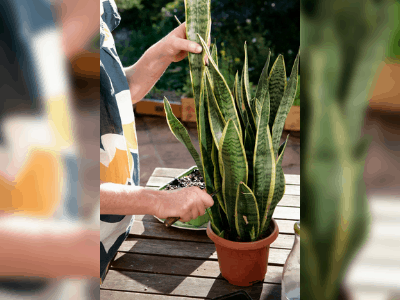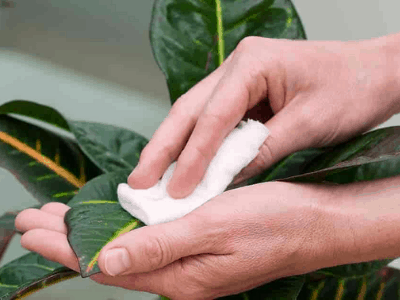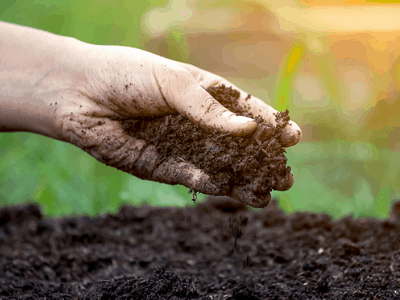
Grooming Your Snake Plant By Yourself!
Have you ever been questioned for the best way to clean and grooming your snake plant leaves?
Not just your snake plant, but your entire houseplant! Here’s how it works.
The popular houseplant is a perfect way to brighten up your home while still requiring little upkeep.
Grooming your house plants is one of the most time-consuming aspects of caring for them, and with good reason.
Grooming takes time, but it keeps plants safe and improves their appearance significantly.
Continue reading to learn how to clean plant leaves. Furthermore, the time you spend washing, trimming…
…and shaping your indoor plants tells you a lot about their overall health.
Cleaning the leaves of your houseplant on a regular basis increases the chances of catching pests…
…and symptoms of disease early, which makes recovery and cure simpler and more fruitful.
In this post, we’ll go over the importance of proper plant grooming as well as some helpful hints..
…for keeping your plants tidy and safe. Here’ we have story from Regina, about her experience grooming snake plant!
Let us hear Regina’s story!
I had just bought a snake plant and I wanted to take care of it myself.
But the thing is, I have never owned a snake plant before.
And the Internet told me that they need watering about once every 3-4 days.
So this posed an issue for me because all my plants died when I tried to water them without following directions first.
But no worries! After reading some reviews online about how to deal with these plants…
….someone suggested to groom my snake plant with care and keep in mind that…
...this plant doesn’t need to be care regularly! This is awesome for me who kind of lazy to deal with regular stuff.

To reduce the height of the plant, cut off the tallest leaves all the way to the soil line. The leaves grow in a rosette pattern from the rhizome in the soil, with the newest leaves at the center of the rosette and the oldest, tallest leaves usually around the outside. This makes it a little easier to reduce your plant’s height without altering the character of the plant.”
Ottillia “Toots” Bier, author from pe.com
Here’s the main thing!
How To Clean Plant Leaves
How To Grooming Your Snake Plant 101
Plants that are kept indoors accumulate fuzzy leaves over time. Keeping your plants’ leaves clean of dust…
…and pollutants improves their appearance. It also assists them in maintaining their fitness.
Air-purifying and air-filtering plants with clean leaves can absorb more light and conduct photosynthesis…
…more effectively. They can also absorb foliar fertilizer more thoroughly and effectively.
It’s important to use gentle, effective methods to clean plants that extract pollutants without damaging them.
You can use a commercial leaf cleaning product and follow the directions on the package…
….or you can clean your plants with light dish soap water and a pure clear lukewarm water rinse every now…
…and then to keep them clean and pest-free. Using a solution of water and insecticidal soap or neem oil…
…to combat pests like aphids, spider mite attacks, plant scale bugs, and mealybug infestations.
Homemade leaf shine products should be avoided because they can clog pores and prevent transpiration.
Add a few drops of Neem tree oil to your spray solution to give smooth leaves a beautiful shine.
This will also help to keep pests at bay. You’ll need the following items to clean the leaves of smooth-leaved plants::
- A spray bottle of cleaning product
- A soft, clean cloth or paper towels
Here’s how to clean indoor plant leaves:
- Spray your plant’s leaves with your cleaning solution, then wipe them clean with a soft cloth or paper towel.
- To remove dust and contaminants without destroying or unintentionally removing the leaves, use just the right amount of pressure and resistance.
- Be prepared, when you clean your houseplants like: Plant of jade (Crassula) The process of learning your mother-in-tongue law’s will take some time. Be sure to change the wipers on Snake plant, Spider plant (air plant), and chlorophytum comosum Mother of Thousands on a regular basis (Kalanchoe daigremontiana).

Keep going…
No Scrubbing!
Often start at the bottom of the stem and work your way up to the tip of the leaf.
With a “wiper” in each palm, brush both sides of the leaf with a soft cloth or paper towel at the same time.
African Violet plants and other plants with pronounced fuzzy leaves or leaf hairs would not be able…
…to be washed this way. Using a dry, soft terry washcloth, clean individual leaves.
A soft paintbrush or makeup brush may also be used to gently brush furry leaves.
Work your way up from the base of the stem to the tip of the leaf once more. Once or twice a month…
…do this kind of leaf-by-leaf cleaning. Use lighter methods to keep dust at bay in between.
You may use a soft feather duster to remove dust and keep your plants fresh between rigorous cleaning sessions…
…for smaller plants. If you have large plants to clean (Ficus benjamina, Ficus elastica, Burgundy Ficus pandurata plant)…
…you can use a leaf blower (yes, this technique is used in shopping malls) to blow away dust and debris…
..then thoroughly spray the plant with a mild insecticidal soap and water solution.
Make sure you do this early in the day, in a well-ventilated environment, so the plant can dry completely before dark.
It should be noted that using any form of food product to clean plants will encourage pests to thrive.
On the internet, mayonnaise has been suggested. If you have plants in your kitchen, keep an eye out…
…for grease buildup on the leaves. These plants may need more frequent cleaning.
Keep reading…
Don’ts On Cleaning Plant Leaves
Don’t use a plant shine they can clog the pores plants use to “breathe” and damage some plants like ferns.
Don’t spray the flowers this can reduce the longevity of the blooms. Don’t “scrub” leaves…
….you can damage and bruise the leave surface

Next up…
Keep The Surface Of The Soil Clean
Check the surface of the soil for any dead leaves, fallen blossoms, fruit, or other debris after you’ve finished…
…cleaning your plant’s leaves. Remove any debris that has accumulated and, if necessary, refresh the soil.

Keep reading…
Trim Off Diseased & Damaged Leaves
The climate, as well as pests, can harm the leaves of indoor plants. They can fade or become blighted at any time.
They grow old, change colors, and eventually die. It’s a good idea to keep these diseased or pest-infested leaves…
…trimmed away to make your plant look healthier and avoid disease and pest problems.
Sharp, clean scissors, shears, or pruners should be used to snip off leaves that have died or turned entirely yellow…
…at the root. Although it is possible to pinch or pull damaged leaves off by hand, it is often preferable…
…to use a sharp, clean tool to prevent further plant damage. Small damaged spots or edges on leaves…
…can be carefully trimmed away to eliminate the damage.
To do so, use very sharp scissors and trim the leaf in such a way that the natural form of the leaf is preserved.
Trim away from the leaf’s healthy half. Rather, leave a small margin around the damaged area.
Go on….
Deadheading Is Important
Deadheading is a good way to keep flowering plants clean. To boost the appearance of the plant…
…promote more blooms, and help avoid disease, fungal infections, and pest infestation, always cut off spent blooms.
You will want to remove the anthers (pollen-bearing parts) as soon as they emerge if you have potted plants…
…that shed pollen (for example, the peace lily flower). This keeps the plant clean, extends the life of the flower…
…and benefits people who are allergic to pollen.
Last but not least..
Some Flowers Are Just Messy
Some indoor plants, such as Dracaena, have sticky nectar that drips from their blossoms.
While this type of plant does not always bloom, it is best to remove the flowers as soon as possible to prevent a mess.
If your plant grows fruit, make sure to select it as soon as possible to prevent a mess.
Indoor palms and plants like Aglaonema Ficus trees are particularly susceptible to growing fruit (rarely indoors)…
…which is initially attractive but quickly becomes shabby. If it is left to rot for an extended period of time…
…it will attract pests and will fall, creating clutter around the plant.
Sum Up
See having Snake plant is good choice for you to have! It’s cool, its famous, it’s easy to have and care!
What else do you need? In this pandemic time like this, is a good choice for you to have an new activity…
…and having snake plant is a good choice for you to have!
Conclusion
Last thing for sure. This plant need to be care carefully, remember plant need the “love” too.
Alright that’s all for today! Do you have any questions about all of this?
Or do you want to add some method to grooming your snake plant?
Let me know your recommendation from the comment below.
Check out more posts on our website like this one here!
I hope you can now take care your snake carefully and grow it big!
Thanks for reading this article! Bye!

